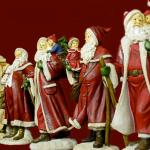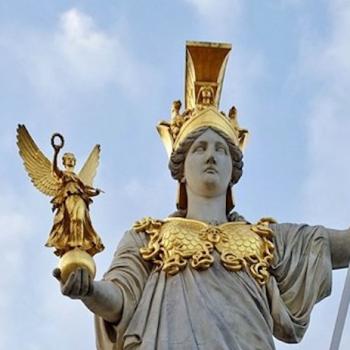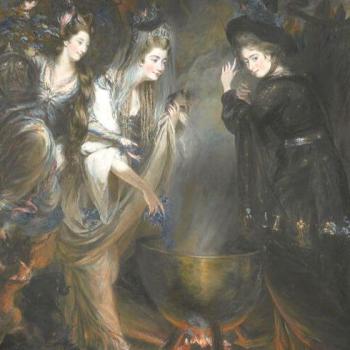Writing about a god is a bit of a tricky prospect. Writing about a god whose story is basically non-existent, with just a handful of historical references, gets downright treacherous. That’s precisely what we have in Cernunnos. He’s both ubiquitous and enigmatic. There’s the Cernunnos found in Gaul from two thousand years ago and the Cernunnos found on tee shirts at your favourite pagan gathering. There’s a tension between what I’d like to believe and what I actually know from historical and mythological sources.
Will The Real Cernunnos Please Stand Up?
Here’s a very short version of what is known about Cernunnos. The name “Cernunnos” only appears once and it’s missing the “C”. The inscription and accompanying image was carved onto a pillar dated to roughly 14 CE. The pillar, known as the “Pillar of the Boatmen”, was rediscovered in the early 18th century at Notre Dame cathedral in Paris. The image shows a face, antlers, and two torcs hanging from the antlers. There’s one other inscription that probably references Cernunnos. A metal plaque, found in modern-day Luxembourg, bears the phrase “to the God Cerunincos”.
There are a handful of ancient carvings and depictions of an antlered deity with torcs. Antlers, coins, snakes and torcs feature on most/many images of Cernunnos, but not all. Cernunnos is depicted sitting, cross legged, but there are artifacts where he’s standing or it’s not clear. Anthropologists think that the frequency of coins and torcs and livestock, might symbolize wealth. The fact that the Pillar of The Boatmen was placed near a busy river port suggests to some that Cernunnos could have been a commerce deity. The “Cern” part of Cernunnos comes to us through Gaulish, Latin, and German root words which all translate to “horned”.
So what we know is that there was a mostly Gaulish deity present two thousand years ago that had antlers and liked torcs. That’s pretty much it. There is no specific story associated with this Cernunnos but there’s speculation that he might have been a mercantile god.
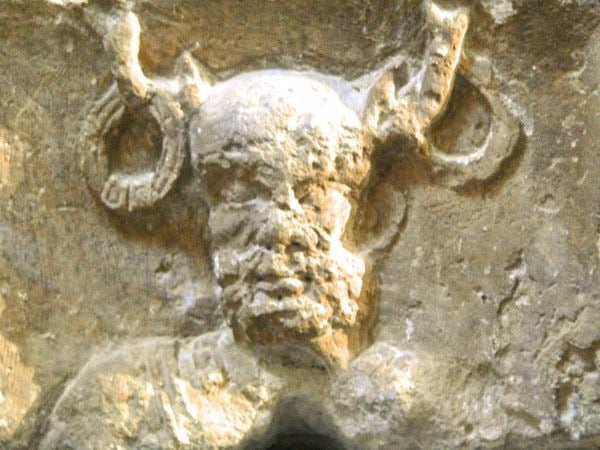
The Lord of The Forest: Death, Sex, & Rebirth
I’m more familiar with Cernunnos of the forest and I bet you are too. The meditating, antlered god who inhabits ancient forests, commands the beasts, and rules over hunting and rutting and dying and coming back again. I love this idea. There’s nothing to support this really, but damn if it ain’t a nice idea. So if there’s nothing “real” about this version of Cernunnos, why do so many people think there is? Again, there isn’t anything, anywhere that says this is who Cernunnos was, but it is how many of us have come to think of him.That’s largely got to do with the fact that present day pagans are a romantic lot and we have really bad male role models. Wait what? Well, let’s look a little more closely at this shall we?
I love a good tale. The story of a forest god that sheds his antlers annually, is a loving consort to the goddess, and makes sure that everything dies and gets reborn in just the right way, is totally romantic. This is basically the story we’ve been told for about the last one hundred years. Margaret Murray, in her 1931 book “The god of the witches” lays out a pretty compelling story that horned and antlered gods were worshiped throughout ancient Britain and Western Europe. Almost all of her conclusions are wrong, but the story has stuck around because we need it to. I’ll come back to that bit in a minute.
We’re back to antlers for now. Antlers are found on deer. Deer live in the forest and they were absolutely everywhere in forested Western Europe. Deer are hunted by humans for food and hides and all manner of things can be made from their bones. When an animal is hunted and is caught, it dies (Death). With any luck, if the rutting season goes well (Sex), there will be more deer to hunt and eat the next year (Rebirth). So, Cernunnos has antlers, and was a deity, and Margaret Murray said there were horned gods revered in Britain and Gaul, and Cernunnos is from Britain and Gaul, so Cernunnos must be the god of the forest worshiped in ancient pagan times.Totally incorrect, but it feels so right, doesn’t it?
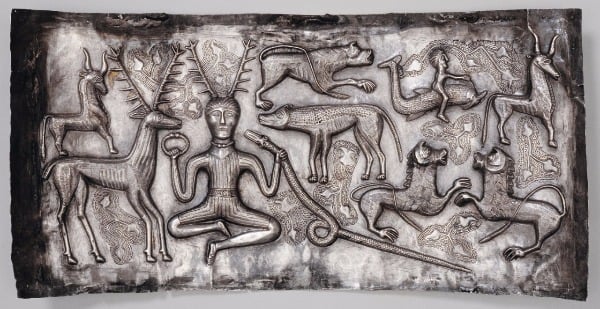
That Bit About Bad Male Role Models And Why Cernunnos Has Stuck Around
We need Cernunnos. The modern myth of Cernunnos doesn’t center around his misdeeds. There isn’t a version of any Cernunnos story where he throws a godly shit-fit and destroys nature or kidnaps the goddess or tosses lightning bolts about all willy-nilly.
Cernunnos, as the modern retelling goes, is the Lord of the Forest. He prevails over hunting and death and the wild places and the wild things in the wild places. He understands that nature has a course to run. Cernunnos watches over the wild without interfering with it. Humans, especially human men, have a nasty habit of not being particularly good about protecting wild spaces or respecting that nature takes time, and needs space to do the stuff that nature does.
Cernunnos doesn’t take. There are precious few myths were we humans don’t take something. He is of the natural world and at peace with that. There are precious few myths were we humans are at peace with the wild world. Apart from some mythologically suspect images of Cernunnos with a large phallus, he’s not dick-centric. Most importantly, he’s a male god that isn’t a total dick. There are precious few myths were the male god isn’t a total dick.
The Cernunnos I Know
I have a large tattoo on my back. It’s inspired by my relationship with Cernunnos. He is the god, archetypal image, man, I aspire to be. His “energy-signature” is primal and masculine. He is equally an observer and participant in life’s dance. His intimate knowledge of his place in nature is coupled with his infinite curiosity of how he impacts the places he occupies. I rarely find him in myth but I feel him ever present in my life and in my magic. It’s a bit weird to say this, but I think some of you might know what I mean. When I feel him close to me, I get all choked up and enlivened simultaneously. He reminds me of who I am and who I can be. And that’s powerful magic.
.


